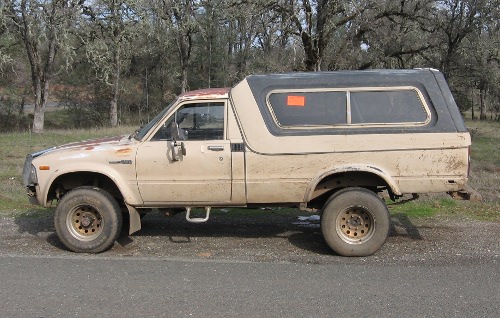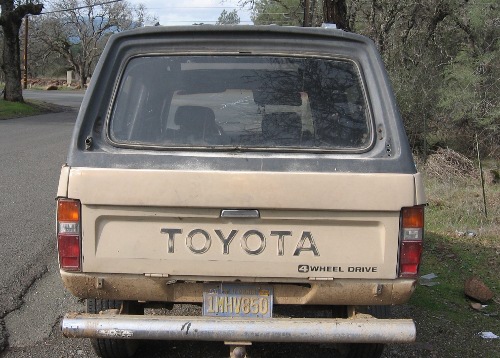- Elizabeth Larson
- Posted On
Jury shares perspectives on verdicts in Clearlake murder case
The jurors ruled that Shannon Lee Edmonds, 35, was guilty of second-degree murder for the Sept. 22, 2009, stabbing and beating death of 25-year-old Shelby Uehling, but that Edmonds' codefendant, 38-year-old Melvin Dale Norton, was not guilty of murder.
Edmonds also was found guilty of two counts of assault with a deadly weapon, one for use of a knife, the other for the use of an asp – an extendable police-style baton. The jurors also convicted him of personally inflicting great bodily injury on Uehling.
The jury acquitted Edmonds of assault with force likely to produce great bodily injury.
Norton was found not guilty of murder, assault with a deadly weapon using a knife and assault with a deadly weapon using an asp, but convicted of assault with force likely to produce great bodily injury and being an accessory to murder.
The two men are scheduled to be sentenced on April 26.
Lake County News was unable to catch up with prosecutor Art Grothe on Thursday following the verdicts.
A call to Uehling's stepfather was not returned Thursday.
Doug Rhoades, who represented Edmonds, said he was disappointed by the second-degree murder verdict.
“I thought that the more appropriate verdict, given the facts of Shelby Uehling essentially loitering about for four hours, in an area where the defendants lived, without cause, apparently looking for trouble, would have more appropriately supported a voluntary manslaughter verdict,” he said. “That was my goal, if not a self-defense verdict, which I realize would have been difficult based on the evidence presented.”
He said it was Uehling, not Edmonds, who was the aggressor. “I believe that is what the evidence showed,” but he added that the jury has spoken and, absent the appeal to follow, “that is the verdict with which we must live.”
Rhoades added, “I appreciate the patience of the jury, and echo Judge Mann's comments that the jury was exemplary in their dedication to their tasks.”
Stephen Carter, who represented Norton, called the not guilty verdict on the murder charge “a wonderful result” for his client.
“I'm very pleased to have helped acquit my client of the murder charge as well as the other assaults,” he said.
Based on the penal code, second-degree murder can bring a sentence of 15 years to life, and assault with a deadly can bring about four years in prison.
Carter said under normal circumstances his client would be looking at four years and eight months in prison, but because of two previous strikes he could be facing 25 years to life, more time than Edmonds.
“That, to me, seems a little unjust,” Carter said.
He'll seek a Romero motion to strike one of Norton's previous strikes in an effort to get a lower sentence of about 10 years.
Jurors explain their approach to the case
Testimony in the trial began Jan. 28, following more than three weeks of jury selection.
Once seated, the six-woman, six-man jury sat through what Rhoades would call in his closing statements a “convoluted case.”
They would hear from Edmonds and Norton themselves – both in testimony on the stand and from their recorded interviews with police in the hours following Uehling's death.
The jury also heard from a pathologist, criminalists, police officers, witnesses who claimed to have heard the fatal fight and the woman believed to be at the center of that final confrontation – Patricia Campbell, who had dated Edmonds for several months before disappearing to spend a methamphetamine-fueled week with Uehling.
After a week with Uehling, the 23-year-old Campbell would abruptly return to Edmonds, testifying that she had always loved him and wanted to be back with him.
Uehling had called her repeatedly and attempted to contact her at her mother's home. She would tell both Edmonds and Norton – a longtime family friend – that Uehling was stalking her.
That, Edmonds and Norton would tell the court, was the reason they walked up to Uehling's car, which Norton spotted not far from the trailer park where he lived early on the morning of Sept. 22, 2009. They said they intended to tell Uehling to leave Campbell alone.
In the ensuing fight, Uehling's throat would be cut. His lifeless body was found face down, the torso slightly propped up on the elbows, next to a tree alongside Old Highway 53.
Following their dismissal from service Thursday morning, several of the jurors agreed to share details of their deliberations with Lake County News.
They said they hadn't expected to finish up on Thursday; one juror said she had thought deliberations would continue into next week. But at about 10 a.m. they settled on the verdicts and began to fill out the necessary forms. The verdicts were ready about 45 minutes later.
They took to heart the words of the jury instructions – which Rhoades had admonished them to remember – regarding the importance of having an “abiding,” and lasting, conviction of guilt on the charges.
“We all wanted to be able to sleep at night afterward,” said one female juror, who asked that her name not be used. This was her first jury trial.
Clearly emotional after the verdict, she was the same juror who had been approached by a local store owner weeks earlier while she was on a break from the trial. The business owner had told the juror that she had been injured in a hit and run crash involving Norton. The juror had reported the incident to the court immediately but the court found no issue.
She and her fellow jurors noted that they worked to be respectful of each other, even at times when they weren't agreeing in the lengthy and emotional deliberations.
Part of her emotion was due to her awareness of what impact her decision would have on the lives of Norton, who she found a more sympathetic figure, and Edmonds, who she called “cold.” She said she has been especially nervous and jumpy in recent days.
She gave high marks to defense attorneys Rhoades and Carter for their efforts.
Another juror, Jeff Hill, said this was his third trial serving as a juror. He also noted the respectful nature of the jurors working together.
“We went through an ordeal,” he said.
Even so, Hill suggested that some friendships were created in the jury room. To break the tension in the room, which sometimes got emotional because of the case, there would occasionally be some joking and laughter to help lighten the mood.
They said everything was important to consider in the deliberations, with Hill noting that they went through everything methodically. “We tore apart the evidence,” Hill said. “We didn't want to take anything for granted.”
A key piece of evidence cited by jurors was the pair of blue jeans Norton was wearing when the fight took place. He had testified that blood on the pants came from when Edmonds had reached out to hit him on the leg, not blood spatter from the fight, a claim the jurors believed to be true.
“You could almost see the handprint on the pants,” said Hill.
During deliberations, Rich Swaney, who was jury foreman, said they had large sheets of paper – one for every witness with evidentiary value – hanging on the jury room wall, and they broke down the judge's jury instructions down line by line to make sure they understood the applications of the law.
“It was very methodical,” Swaney said, explaining how they organized their approach to deliberations.
“We put a lot of value on the initial statements” to police, said Swaney.
In those initial statements, the golf club buried in the dash didn't come up, Swaney noted.
There was too much emphasis on some issues – like Norton's differing accounts of walking or bicycling home, and not enough discussion of things like doughnuts that were laying in the roadway, jurors said.
Those doughnuts were found near where Uehling's body was found, down the road from his car. That led jurors to conclude on a different scenario for the fight.
Uehling had been spotted at Flyer's gas station earlier in the evening buying the doughnuts, which they believed he had in his hand – along with a small flashlight – when he got out of the car, after they believe Norton swung the golf club.
They don't believe Norton meant to hit him, and they diverge on whether Norton swung it through the driver's side or the passenger side windows.
However, they felt that Uehling got out of the car with the doughnuts and flashlight in hand and that a fight didn't start behind the car, but rather down the road, where they think Uehling had run to safety. There they believed he dropped the doughnuts.
Swaney suggested Uehling may have said something that caused Edmonds to lose his temper, leading to the fatal wounds.
“The guy's like a light switch,” Swaney said of Edmonds.
He pointed to how Edmonds started to lose his temper both in his interview with police and when Grothe had him on the stand, asking him repeatedly about certain aspects of the fight.
The jurors pointed out that the fight could only have lasted a few minutes; there was only eight minutes between the last phone call from Uehling's phone to his friend Linda Dale – it was only a few seconds and he had probably only started dialing – and when police arrived at the scene around 1:16 a.m.
They didn't believe Uehling had stalked Campbell, who Swaney called a “puppeteer.” Her comments to Edmonds about Uehling stalking her helped created Edmonds mindset, jurors suggested.
The jurors were curious to find out about what they didn't hear during the trial – including information about an additional strike on Norton's record and a mistrial motion, among other issues.
They also asked about Edmonds' previous issues with the law, and were surprised to find out about an incident in December 2005 when three men allegedly broke into his home to steal marijuana and beat him, his girlfriend and her son. Edmonds fatally shot two of the men in the back as they ran from his home.
When they heard about that case, two of the female jurors gasped.
E-mail Elizabeth Larson at This email address is being protected from spambots. You need JavaScript enabled to view it. . Follow Lake County News on Twitter at http://twitter.com/LakeCoNews and on Facebook at http://www.facebook.com/pages/Lake-County-News/143156775604?ref=mf .

 How to resolve AdBlock issue?
How to resolve AdBlock issue? 







